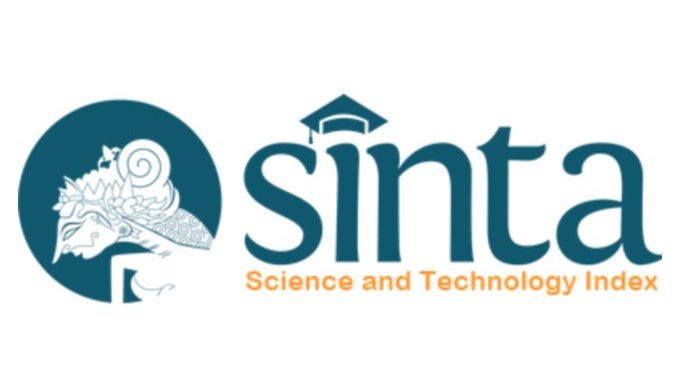Infeksi Dengue Sekunder: Patofisiologi, Diagnosis, dan Implikasi Klinis
DOI:
https://doi.org/10.55175/cdk.v50i2.518Kata Kunci:
Dengue sekunder, DHF, diagnosis, implikasi medis, patofisiologiAbstrak
Infeksi dengue sekunder merupakan infeksi dengue yang terjadi kali kedua. Infeksi kedua dengan serotipe berbeda dapat menyebabkan
penyakit dengue yang lebih berat. Penelitian menunjukkan bahwa 98% kasus dengue hemorrhagic fever/dengue shock syndrome (DHF/DSS) merupakan infeksi dengue sekunder. Patofisiologi yang menjadikan infeksi dengue sekunder lebih berat belum sepenuhnya dipahami, diduga berkaitan dengan mekanisme antibody dependent enhancement (ADE). Membedakan infeksi dengue primer dan sekunder penting agar dokter dan tenaga kesehatan mampu memprediksi prognosis dan keluaran klinis pasien.
Dengue secondary infection is the second dengue infection. A second infection with different serotype tend to be more severe. Data shown that 98% cases of dengue hemorrhagic fever/ dengue shock syndrome (DHF/DSS) are dengue secondary infection. The pathophysiology of more severe cases is not fully understood; it is suspected to be related to antibody dependent enhancement (ADE) mechanism. Differentiating primary and secondary dengue infection is important to predict patient’s prognosis and clinical outcome
Unduhan
Referensi
World Health Organization. Dengue and severe dengue [Internet]. 2022 Jan 10 [cited 2022 Jun 11]. Available from: https://www.who.int/news-room/fact-sheets/detail/dengue-and-severe-dengue.
Murugesan A, Manoharan M. Dengue virus. Academic Press; 2020 .p. 281-359. doi:10.1016/B978-0-12-819400-3.00016-8
Guzman MG, Gubler DJ, Izquierdo A, Martinez E, Halstead SB. Dengue infection. Nat Rev Dis Prim. 2016;2:1-26. doi:10.1038/nrdp.2016.55
World Health Organization. Ten threats to global health in 2019 [Internet]. 2019 [cited 2022 Jun 16]. Available from: https://www.who.int/news-room/spotlight/ten-threats-to-global-health-in-2019.
World Health Organization. Comprehensive guidelines for prevention and control of dengue and dengue haemorrhagic fever [Internet]. 2011. Available from: https://apps.who.int/iris/handle/10665/204894
Bhatt S, Gething PW, Brady OJ, Messina JP, Farlow AW, Moyes CL, et al. The global distribution and burden of dengue. Nature 2013;496(7446):504-7. doi:10.1038/nature12060
Harapan H, Michie A, Mudatsir M, Sasmono RT, Imrie A. Epidemiology of dengue hemorrhagic fever in Indonesia: Analysis of five decades data from the National Disease Surveillance. BMC Res Notes. 2019;12(1):4-9. doi:10.1186/s13104-019-4379-9
Utama IMS, Lukman N, Sukmawati DD, Alisjahbana B, Alam A, Murniati D, et al. Dengue viral infection in Indonesia: Epidemiology, diagnostic challenges, and mutations from an observational cohort study. PLoS Negl Trop Dis. 2019;13(10):1-19. doi:10.1371/journal.pntd.0007785
Changal KH, Raina AH, Raina A, Raina M, Bashir R, Latief M, et al. Differentiating secondary from primary dengue using IgG to IgM ratio in early dengue: An observational hospital based clinico-serological study from North India. BMC Infect Dis. 2016;16(1):1-7. doi:10.1186/s12879-016-2053-6
Guzman MG, Alvarez M, Halstead SB. Secondary infection as a risk factor for dengue hemorrhagic fever/dengue shock syndrome: An historical perspective and role of antibody-dependent enhancement of infection. Arch Virol. 2013;158(7):1445-59. doi:10.1007/s00705-013-1645-3
Guzmán MG, Kourí G, Martínez E, Bravo J, Riverón R, Soler M, et al. Clinical and serologic study of Cuban children with dengue hemorrhagic fever/dengue shock syndrome (DHF/DSS). Bull Pan Am Health Organ. 1987;21(3):270-9.
Díaz A, Kourí G, Guzmán MG, Lobaina L, Bravo J, Ruiz A, et al. Description of the clinical picture of dengue hemorrhagic fever/dengue shock syndrome (DHF/DSS) in adults. Bull Pan Am Health Organ. 1988;22(2):133-44.
Guzman MG, Alvarez A, Vazquez S, Alvarez M, Rosario D, Pelaez O, et al. Epidemiological studies on dengue virus type 3 in Playa municipality, Havana, Cuba, 2001-2002. Int J Infect Dis. 2012;16(3):199-204. doi:10.1016/j.ijid.2011.09.026
Valdés L, Guzmán MG, Kourí G, Delgado J, Carbonell I, Cabrera MV, et al. [Epidemiology of dengue and hemorrhagic dengue in Santiago, Cuba 1997]. Rev PanamSalud Publica. 1999;6(1):16-25. doi:10.1590/s1020-49891999000600003
Guzmán MG, Alvarez M, Rodríguez R, Rosario D, Vázquez S, Vald s L, et al. Fatal dengue hemorrhagic fever in Cuba, 1997. Int J Infect Dis. 1999;3(3):130-5. doi:10.1016/S1201-9712(99)90033-4
Alvarez M, Rodriguez-Roche R, Bernardo L, Vázquez S, Morier L, Gonzalez D, et al. Dengue hemorrhagic fever caused by sequential dengue 1-3 virus infections over a long time interval: Havana epidemic, 2001-2002. Am J Trop Med Hyg. 2006;75(6):1113-7.
Morens DM. Antibody-dependent enhancement of infection and the pathogenesis of viral disease. Clin Infect Dis. 1994;19(3):500-12. doi:10.1093/clinids/19.3.500
St. John AL, Rathore APS. Adaptive immune responses to primary and secondary dengue virus infections. Nat Rev Immunol. 2019;19(4):218-30. doi:10.1038/s41577-019-0123-x
Rothman AL. Immunity to dengue virus: A tale of original antigenic sin and tropical cytokine storms. Nat Rev Immunol. 2011;11(8):532-43. doi:10.1038/nri3014
Kurane I, Hebblewaite D, Brandt WE, Ennis FA. Lysis of dengue virus-infected cells by natural cell-mediated cytotoxicity and antibody-dependent cell-mediated cytotoxicity. J Virol. 1984;52(1):223-30. doi:10.1128/jvi.52.1.223-230.1984
World Health Oraganization. Guidelines for plaque reduction neutralization testing of human antibodies to dengue viruses [Internet]. 2007. Available from: https://apps.who.int/iris/handle/10665/69687.
Sirivichayakul C, Sabchareon A, Limkittikul K, Yoksan S. Plaque reduction neutralization antibody test does not accurately predict protection against dengue infection in Ratchaburi cohort, Thailand. Virol J. 2014;11(1):1-5. doi:10.1186/1743-422X-11-48
Bourgeois MA, Oaks JL. Ch. 12 - laboratory diagnosis of viral infections. In: Sellon DC, Long MTBT-EID. 2nd ed. St. Louis: WB Saunders; 2014:132-140.e2. doi:https://doi.org/10.1016/B978-1-4557-0891-8.00012-9
Lukman N, Salim G, Kosasih H, Susanto NH, Parwati I, Fitri S, et al. Comparison of the hemagglutination inhibition test and IgG ELISA in categorizing primary and secondary dengue infections based on the plaque reduction neutralization test. Biomed Res Int. 2016;2016:5-9. doi:10.1155/2016/5253842
Blacksell SD. Commercial dengue rapid diagnostic tests for point-of-care application: Recent evaluations and future needs? J Biomed Biotechnol. 2012;2012(1):151967. doi:10.1155/2012/151967
Martina BEE, Koraka P, Osterhaus ADME. Dengue virus pathogenesis: An integrated view. Clin Microbiol Rev. 2009;22(4):564-81. doi:10.1128/CMR.00035-09
Zhang B, Salieb-Beugelaar GB, Nigo MM, Weidmann M, Hunziker P. Diagnosing dengue virus infection: Rapid tests and the role of micro/nanotechnologies. Vol 11. Elsevier B.V.; 2015. doi:10.1016/j.nano.2015.05.009
Falconar AKI, Plata E De, Romero-vivas CME. Altered enzyme-linked immunosorbent assay immunoglobulin M (IgM)/ IgG optical density ratios can correctly classify all primary or secondary dengue virus infections 1 day after the onset of symptoms, when all of the viruses can be isolated. 2006;13(9):1044-51. doi:10.1128/CVI.00105-06
Soo KM, Khalid B, Ching SM, Chee HY. Meta-analysis of dengue severity during infection by different dengue virus serotypes in primary and secondary infections. PLoS One. 2016;11(5):4-14. doi:10.1371/journal.pone.0154760
Centers for Disease Control and Prevention. Vaccine safety & efficacy data | Dengue | [Internet]. 2021 [cited 2022 Aug 20]. Available from: https://www.cdc.gov/dengue/vaccine/hcp/safety-efficacy.html.
Schaefer TJ, Panda PK, Wolford RW. Dengue fever. BMJ Best Pract [Internet]. 2022 April [cited 2022 Aug 15]. Available from: https://www.ncbi.nlm.nih.gov/books/NBK430732/.
Tsheten T, Clements ACA, Gray DJ, Adhikary RK, Furuya-Kanamori L, Wangdi K. Clinical predictors of severe dengue: A systematic review and meta-analysis. Infect Dis Poverty. 2021;10(1):123. doi:10.1186/s40249-021-00908-2
Sam SS, Omar SFS, Teoh BT, Abd-Jamil J, AbuBakar S. Review of dengue hemorrhagic fever fatal cases seen among adults: A retrospective study. PLoS Negl Trop Dis. 2013;7(5):1-8. doi:10.1371/journal.pntd.0002194
Kidwai AA, Jamal Q, Saher, Mehrunnisa, Farooqi F ur R, Saleem-Ullah. Serodiagnosis of dengue infection using rapid immunochromatography test in patients with probable dengue infection. J Pak Med Assoc. 2010;60(11):936-9.
Unduhan
Diterbitkan
Cara Mengutip
Terbitan
Bagian
Lisensi
Hak Cipta (c) 2023 https://creativecommons.org/licenses/by-nc/4.0/

Artikel ini berlisensi Creative Commons Attribution-NonCommercial 4.0 International License.





















